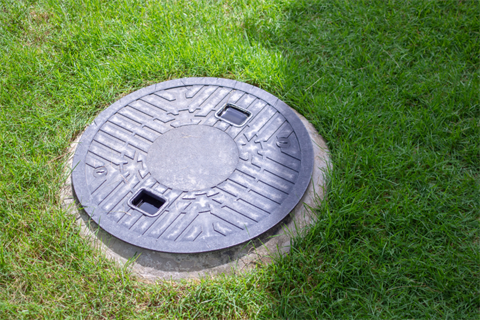Floods and septic tanks

If your property has been impacted by floodwaters, your septic tank system may also be affected.
Most septic tanks should not be structurally damaged by flooding as they are below ground. However, flood water may enter your septic tank system through the toilet, other fixtures or the overflow relief gully grate. Flooding of the septic system may wash out solids from the tank causing blockages or system damage.
It may not be easy to tell if your system has been impacted. Some simple indications, include:
- a pungent odour around the tank and land application
- blocked fixtures and wastewater overflowing from the relief point
- high sludge levels within the primary tank
- sewerage flowing up through the toilet and sinks
Some onsite wastewater treatment systems may rely on mechanical and electrical equipment such as pumps, aerators and filters. This equipment may be damaged by flood or loss of power. To prevent injury or further damage to your system contact your service agent.
What you should do if you think your septic system is affected
- Do not use or flush your toilet until you know that the septic tank system and associated pipes are intact, otherwise wastewater could flow back up into the house through the toilet, shower, bath, and laundry drains.
- If you suspect your wastewater system has been physically damaged by the flood, contact a licensed plumbing practitioner to have it assessed.
- Septic tanks inundated with flood water, silt and debris should be professionally cleaned as soon as possible after the flood water has subsided. It may be necessary to pump out tanks, wells or distribution pits and slotted pipes if they are clogged with displaced solids. Refer to your local business directory to arrange a septic tank pumping service by a licensed contractor.
- Cleaning or pumping out a flooded septic tank should be done with care as this could cause the tank to float out of the ground and damage the structure and pipes. After a septic tank is pumped out, it should be filled with water to prevent it from floating out of the ground.
- If the disposal area is waterlogged or clogged, additional water will not be absorbed into this area and will pool on the surface. Remedial measures such as pumping out the whole septic tank system may be necessary. This may need to be done several times. Saturated soil is especially susceptible to compaction, which can lead to system failure. Avoid compaction of the soil over the wastewater disposal area caused by driving or operating equipment in the area. In extreme cases the disposal area may need to be re-installed. A licensed plumbing practitioner should assess the disposal area for this potential requirement.
- For worm farm septic tank systems, composting toilets or other EPA approved systems, contact the manufacturer for specific advice on how flooding or power outages may affect these systems.
- In most situations turning off power to pumps may be necessary to prevent flooded pumps from overheating, wearing out or pumping out untreated water. In some instances, the pump may be required to be left on to prevent other types of damage – contact your service agent for advice.
What you should do if sewerage has overflowed inside your home
Sewage contains harmful bacteria, viruses and parasites. Sewage needs to be cleaned up as soon as possible. Keep children and pets away from the area until this is done. Some appropriate clean up procedures are:
- Use Personal Protective Equipment (PPE) such as rubber gloves, boots, and eye protection.
- Remove and discard contaminated household materials that cannot be cleaned or disinfected, such as carpet and children's soft toys.
- Clean all contaminated areas with hot water and detergent, then disinfect. Pay special attention to cooking utensils, work surfaces and other surfaces such as floors and walls.
- Dip utensils in a solution of 1.5 cups of household chlorine bleach in 10 Litres of cold water (a household bucket) for two minutes. Rinse in clean water.
- For disinfecting hard surfaces, use the same solution, leaving it wet for 10 minutes. Rinse off with clean water.
- Disinfect cleaning mops, brooms and brushes with the bleach solution.
- Clean and dry dirty footwear and wash your clothes separately after the clean-up.
- Increase ventilation inside the house.
- Throw out food containers that have been in contact with sewage, including unopened bottles.
- Attend to any cuts and wounds immediately. Disinfect the wound then cover with a waterproof dressing.
- Wash your hands and any affected parts of your body with soap and water.
For further advice, contact Council's Environmental Health Unit on (03) 5772 0333.
Further information
Onsite wastewater system:
Council's Environmental Health Officer can provide advice on remedial works, your existing permit or installation of a new system. Contact us on (03) 5772 0333.
Plumbers:
Refer to your local business telephone directory for licensed service providers.
Health information:
Contact your medical doctor regarding any health conditions that may have resulted from contaminated water supplies.
When returning home after a flood, protect yourself and your family from possible injury, illness or disease. Learn more by visiting our Floods and Storms page.